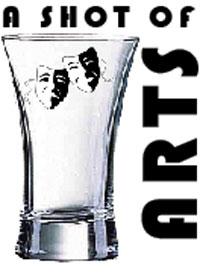Black Heritage Trail
February 11, 2008
One of Boston’s many nicknames is “America’s Walking City.” During the month of February there is no better place for a brisk winter walk than the Black Heritage Trail.
Eight years after the city was founded the first blacks came to Boston as slaves. By 1705, over 400 slaves lived in the city, while the early stages of a free black community were being laid down in the North End. After the American Revolution, things changed dramatically. In 1790, the year of the first federal census, Massachusetts was the only state in the country to record having no slaves.
The Black Heritage Trail, in conjunction with the Museum of African-American History, both explores and celebrates the history of Boston’s 19th century African-American community through historic homes and sites.
Between the years of 1800 and 1900, a small neighborhood in the West End, now known as the North Slope of Beacon Hill, was home to the majority of Boston’s African-American population. This cozy neighborhood is still home to fourteen historic homes and sites that help bring the tale of African Americans in Boston to life.
The tour begins directly across the street from the Massachusetts State House at the Robert Gould Shaw and 54th Regiment Memorial, a sculptural by August Saint-Gaudens dedicated to the first black regiment in the Civil War and their leader. Immortalized in the 1989 film “Glory,” the 54th regiment led an assault on Fort Wagner during a wave of operations aimed at capturing the southern city of Charleston, South Carolina. Sergeant William Carney was the first African American to earn the Congressional Medal of Honor for his bravery; he was wounded three times in attempts to keep the American flag from Confederate capture during the assault.
The trail continues past a string of historic homes that still serve as private residences today. Unfortunately, this means that they can only be seen from the exterior. They include the George Middleton House, located at 5-7 Pinckney Street, which was the first home built by African Americans in Beacon Hill. At 86 Pinckney Street is the John J. Smith House. A local barber, Smith’s shop became a center of abolitionist activity in the city of Boston, as well as a rendezvous point for fugitive slaves. After the Civil War Smith would become a member of the Massachusetts House of Representatives as well as the Boston Common Council.
Various schools and meeting houses can be found throughout the trail. Constructed in 1834, the Abiel Smith School, located at 46 Joy Street, was the first building in the country built for the public education of black children. The school now serves as a museum with exhibits that highlight the importance of the black presence in the city of Boston. The final stop on the Black Heritage Trail is also located at 46 Joy Street. It is the African Meeting House. Built in 1806, this was the center of Boston’s black community and an essential part of the abolitionist movement. It was here that the members of the 54th regiment, led by Robert Gould Shaw, were recruited into the Union army and into history. Frederick Douglass, the author of the world’s most famous slave narrative, gave an anti-slavery speech here in 1860.
While Boston is known throughout the world as a place of great history, the important history of its African-American community is lesser known. Integral to the solidification of our country as the place we know today, Boston’s black community is not only important in the city’s history, but in the nation’s as well. This short walk through Beacon Hill can help to educate and celebrate a significant and fundamental history that is often overlooked by other events that have taken place here in Boston.





















































